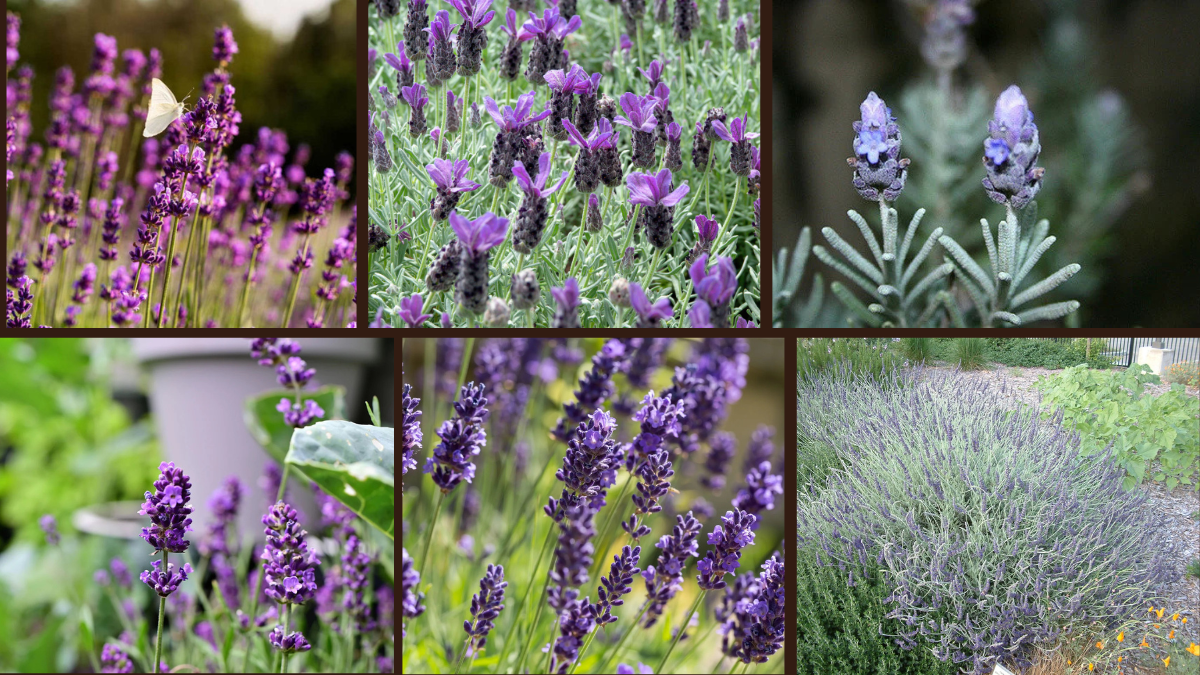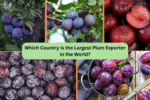Few plants capture the heart of gardeners quite like lavender. Loved for its fragrant blooms, silvery-green foliage, and calming presence, lavender is not only beautiful but also highly practical — attracting pollinators, repelling pests, and offering herbal uses in cooking, aromatherapy, and décor. While many know the classic purple-flowered plant, there are several lavender varieties with unique features to suit different climates, spaces, and garden styles. Here are 7 perfect lavender types to add charm and fragrance to any garden.
1. English Lavender (Lavandula angustifolia)
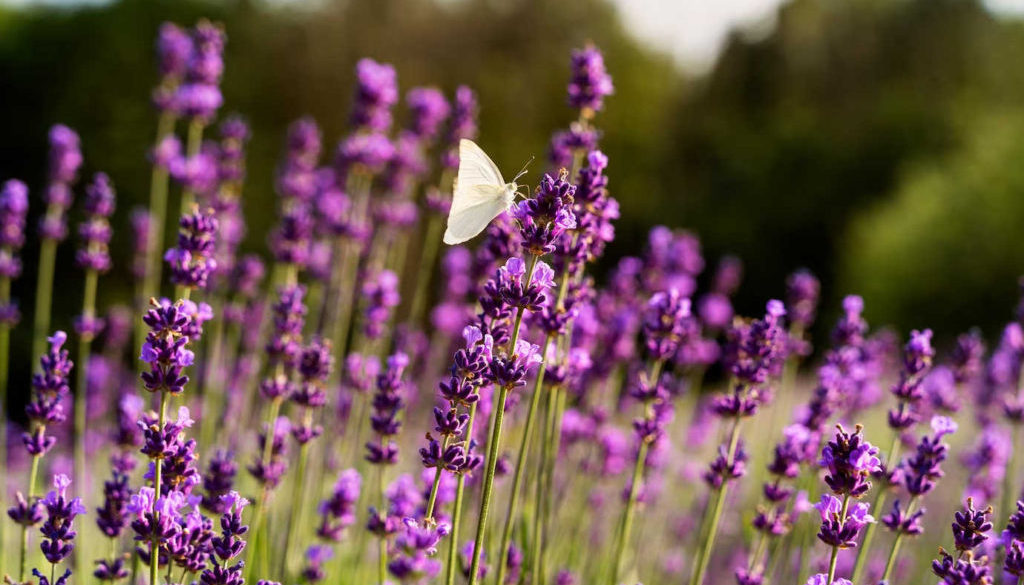
English Lavender is the most popular and widely cultivated variety, known for its compact form, sweet fragrance, and hardiness. It produces dense spikes of violet-blue flowers from early to mid-summer and grows up to 3 feet tall. English lavender is well-suited for borders, herb gardens, and cottage-style landscapes. It’s also excellent for drying and making sachets, wreaths, or infused oils. Varieties like ‘Hidcote’ and ‘Munstead’ are garden favorites for their reliable blooming and rich scent.
2. French Lavender (Lavandula dentata)

French Lavender stands out with its fringed, serrated leaves and distinctive plump flower heads topped with petal-like bracts. Blooming almost year-round in mild climates, it thrives in hot, dry conditions and grows up to 3 feet tall and wide. The flowers are typically purple or violet, though some cultivars offer pinkish hues. French lavender isn’t as cold-hardy as English varieties but makes an excellent choice for pots, sunny courtyards, and Mediterranean-style gardens. Its soft scent and decorative form enhance any outdoor space.
3. Spanish Lavender (Lavandula stoechas)
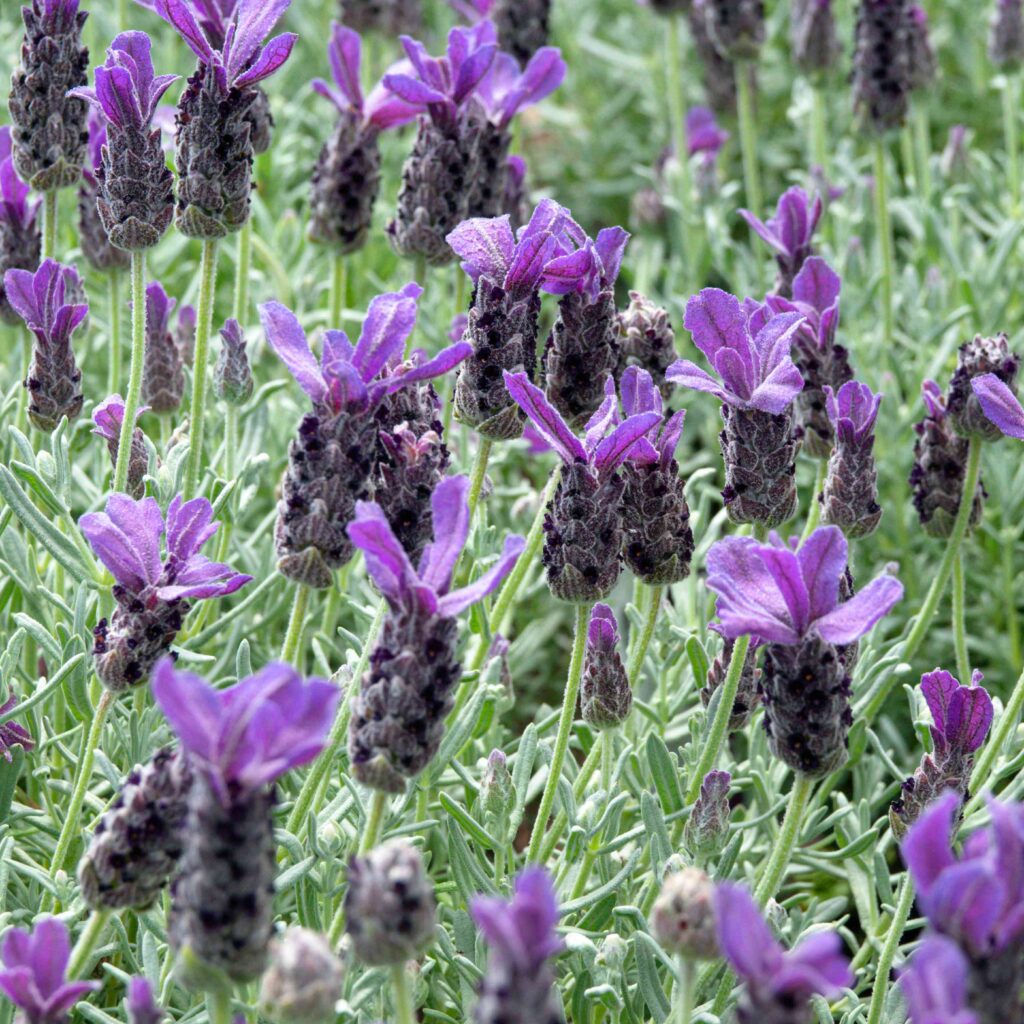
Known for its bold personality, Spanish Lavender features distinctive “rabbit ear” bracts atop short, dense flower heads. The blooms, typically deep purple or magenta, appear from spring to fall in warm climates. Growing 12 to 24 inches tall, Spanish Lavender thrives in hot, dry areas and looks stunning in containers, rock gardens, and drought-tolerant landscapes. It has a strong, slightly camphorous scent and is beloved by bees and butterflies. Varieties like ‘Otto Quast’ and ‘Kew Red’ are particularly eye-catching.
4. Lavandin (Lavandula x intermedia)

A hybrid of English and Portuguese lavender, Lavandin combines the best of both — the hardiness of English lavender and the heat tolerance and large flower spikes of Portuguese lavender. Blooming in mid to late summer, Lavandin plants grow up to 3 feet tall and wide, with long stems bearing fragrant, pale purple flowers. It’s perfect for hedges, large garden beds, and commercial essential oil production due to its high oil content. Popular cultivars include ‘Grosso’, ‘Provence’, and ‘Phenomenal’.
5. Portuguese Lavender (Lavandula latifolia)

Portuguese Lavender is known for its wide, aromatic leaves and tall flower spikes that bloom in late summer. Less common in home gardens, this variety grows up to 3 feet tall and prefers warm, sunny climates. Its scent is stronger and slightly sharper than English lavender, making it valuable in perfumery and herbal remedies. Portuguese Lavender adds height and structure to mixed borders and pairs well with ornamental grasses and sun-loving perennials in Mediterranean and drought-tolerant gardens.
6. Woolly Lavender (Lavandula lanata)
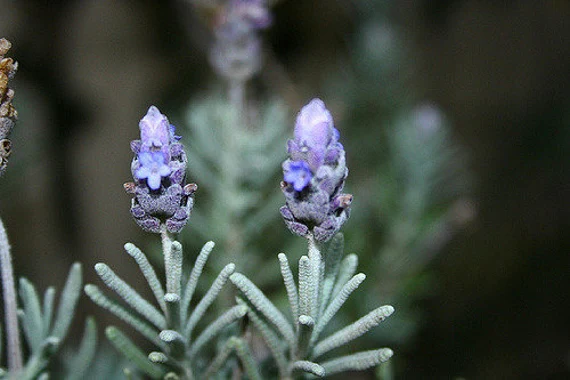
A distinctive and eye-catching variety, Woolly Lavender is named for its soft, silvery, wool-like foliage. It produces light purple flowers on slender spikes in mid to late summer and grows 2 to 3 feet tall. Woolly Lavender thrives in hot, dry, rocky soils and is highly drought-tolerant. Its unique texture makes it a fantastic choice for gravel gardens, xeriscapes, and arid landscapes. While it’s not as fragrant as English or Lavandin types, it offers striking visual contrast and year-round foliage interest.
7. Goodwin Creek Grey Lavender (Lavandula x ginginsii)
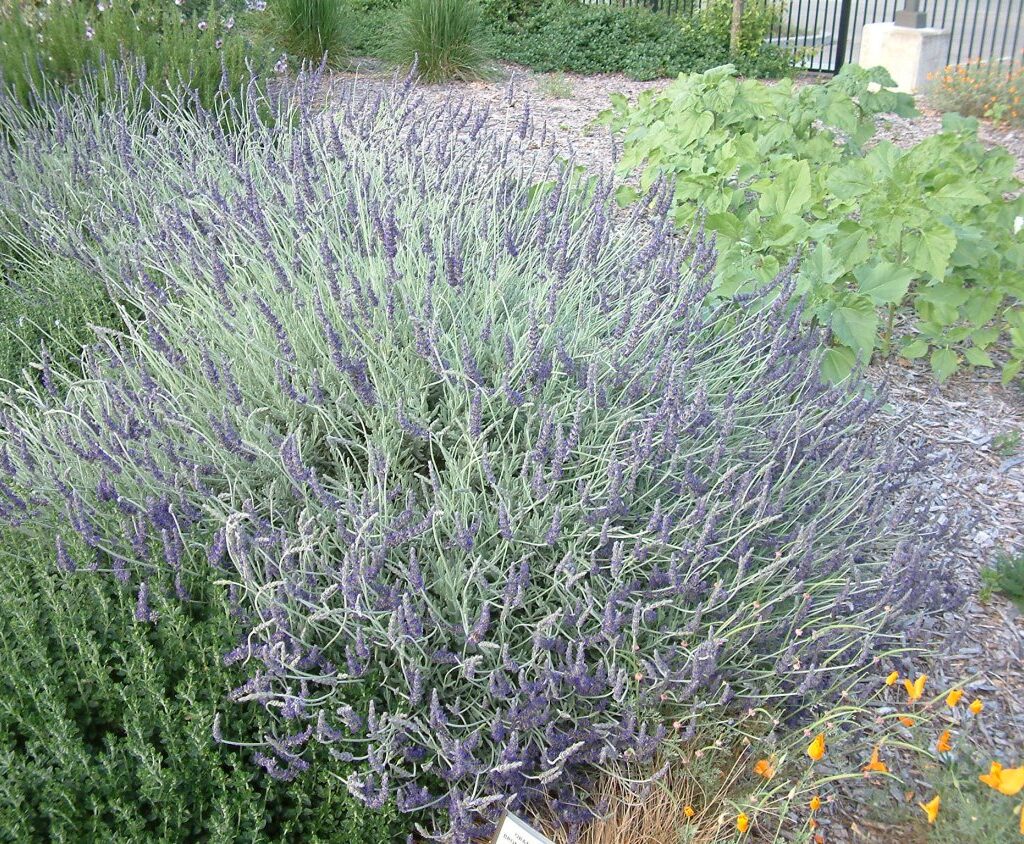
A hybrid between French and Woolly Lavender, Goodwin Creek Grey boasts fragrant, dark purple flower spikes and beautifully textured, silver-grey foliage. Blooming from late spring to fall in warm regions, this variety grows 2 to 3 feet tall and wide and is perfect for containers, borders, or sunny patio gardens. Its dense, aromatic leaves stay attractive year-round, and its long bloom time ensures continuous color. It’s ideal for those wanting a low-maintenance, visually striking, and pollinator-friendly plant.
Final Thoughts
Lavender is as versatile as it is beautiful, with varieties suited for formal borders, cottage gardens, arid landscapes, and patio pots. Whether you’re drawn to the classic beauty of English Lavender, the bold personality of Spanish Lavender, or the striking foliage of Woolly Lavender, these 7 distinctive types can help you design a fragrant, pollinator-friendly, and effortlessly elegant garden space.
Would you like a lavender planting plan or a color-themed border layout featuring these varieties? I’d be happy to craft one for you!
